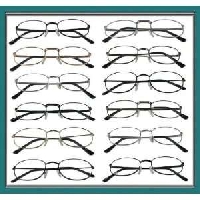
If you need reading glasses, the choice is cleear – get them!
There?s an old joke about the squinting guy holding the newspaper as far away from his eyes as he possibly can while telling his wife, ?I don?t need glasses ? I just need longer arms!?
If this is you, the joke may be funny but the problem isn’t. Whether it’s from age, eyestrain from too much time in front of a computer screen or a global conspiracy to make fine print even smaller, many of us will need reading glasses at some point in our lives. The question at that point is, “What reading glasses do I need?”
Actually, your first question should be, “I wonder what my eye doctor thinks?” A comprehensive eye exam by an optometrist or ophthalmologist will determine if you can get by with just the occasional help from reading glasses or if you have the need for stronger correction provided by prescription eyeglasses.
Once you?ve been assured by your eye doctor that it?s nothing serious, it?s time to head to your favorite drug store, retail store or eyeglass provider to check out the many different kinds of reading glasses available.
Before heading to the store, a better step is to head to the Internet and find a reading glasses guide. These handy charts will help you determine the strength of reading glasses you need. Follow the instructions on how far away from your face to hold the guide and find the last line you can read clearly. That will give you an approximate reading glass strength to look for. Most stores also have these charts on the display, but it pays to be prepared.
~
Reading glasses come in two basic styles – half and full.
Half Frames and Full Frames
Half frames are the ones Ben Franklin made popular. They’re a good choice if you do a lot of close up reading or work but also need to look up frequently at something else more distant, like a computer screen or another person.
If you choose half glasses, make sure they feel comfortable when slid down your nose, which is where they usually end up. These frames have a small viewing area, so the full frame style is the more popular choice. These are good if you need help both with near work and looking at objects further away. No matter which frame you choose, take time to make the right decision on strength.
Read the guide, walk around the store reading labels and go to the magazine or greeting card section and read as much as you can. Look for a strength that gives you the best vision without discomfort.
Once you?ve found your frame and strength, check the reading glasses carefully for bubbles, scratches and flaws. These glasses are inexpensive and mass produced, so they?re not made nearly as well as prescription glasses. You may want to get a second pair since they?re easy to lose until you get used to them. Also consider a case since they?re easy to scratch, especially in a purse or when tossed on a desk or table. Last but not least, choose glasses that look good on you – many brands are extremely stylish.
It’s no joke – reading is an important part of our lives. If things are starting to get a little blurry, take time to choose the best reading glasses you need.
